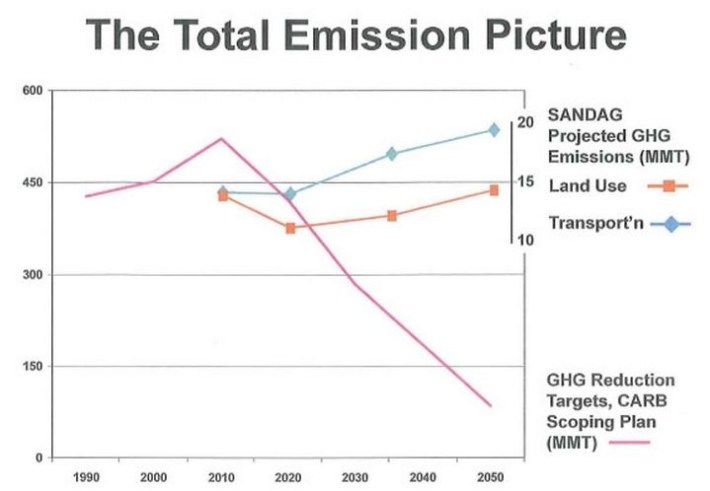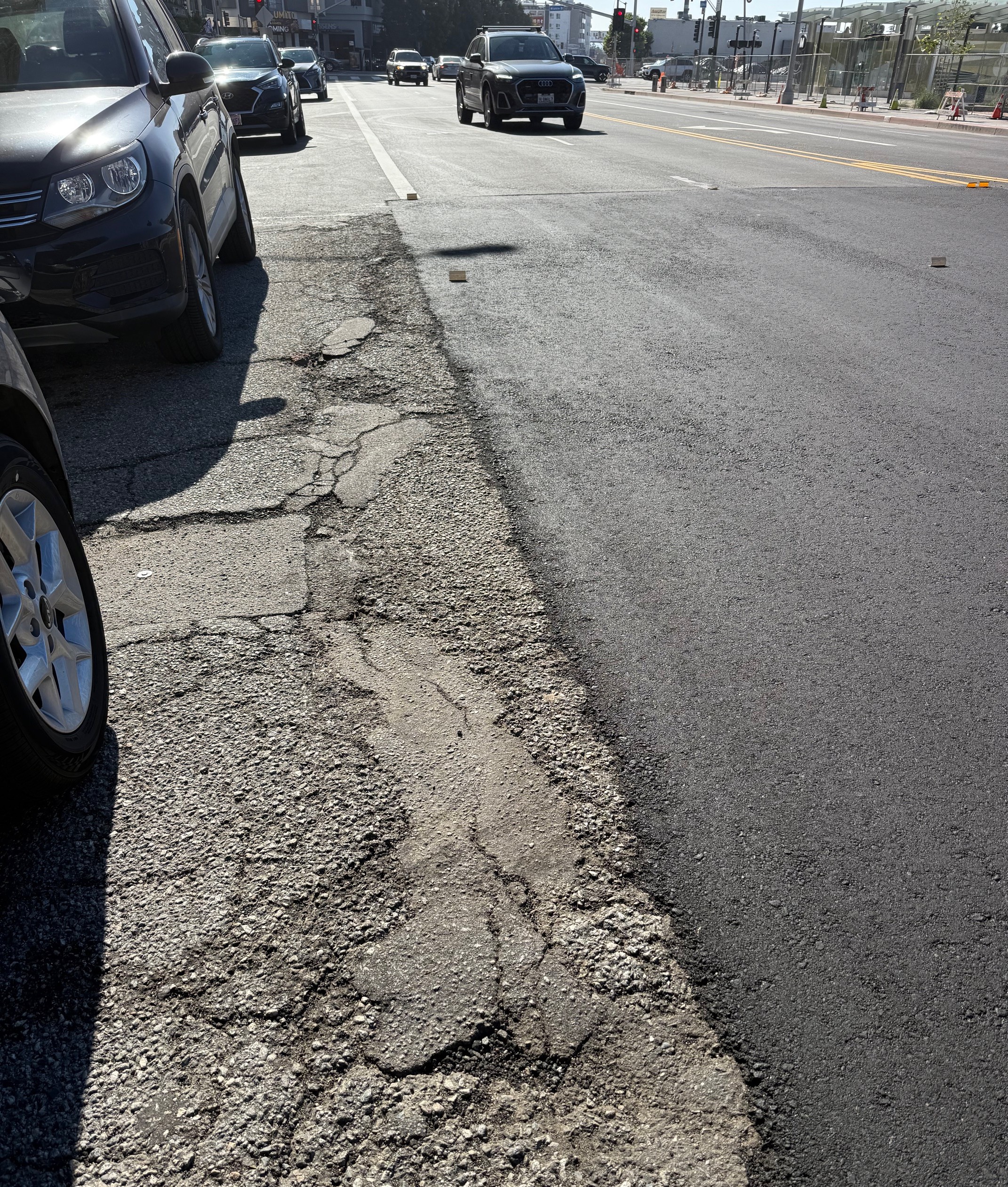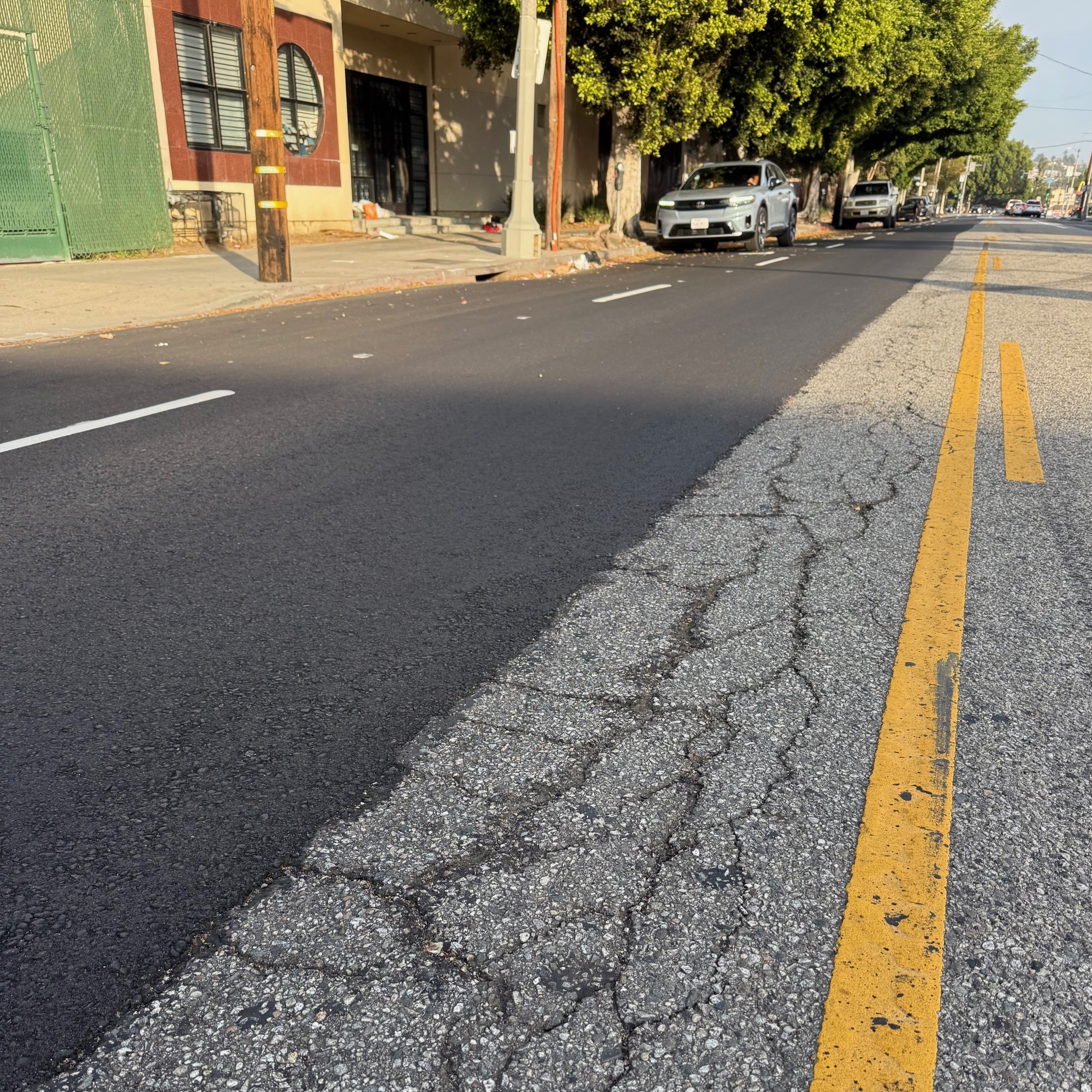
Despite what CA's courts say, San Diego insists on plans to widen freeways in its 2050 Regional Transportation Plan, even if it defies the state's ambitions to reduce climate-changing car dependency.
As Eric Jaffe at CityLab wrote, the story is told in one simple chart created by opponents of the plan, which shows that it projects that greenhouse gas (GHG) emissions would rise through 2050. The San Diego Association of Governments (SANDAG) apparently has no problem with that.
SANDAG does expect its plan to meet short-term GHG reduction targets through 2020, as mandated by A.B. 32, California's Global Warming Solutions Act. A.B. 32 sets specific GHG reduction targets through 2020, but the spirit of the law implies that emissions should continue dropping through 2050, as called for in an executive order from Governor Arnold Schwarzenegger and the CA Air Resources Board's scoping plan. A.B. 32's author, State Senator Fran Pavley, has introduced a new bill for the 2015 session, S.B. 32, which aims to extend GHG reduction mandates through 2050.
But since the 2050 goals in the Governor's executive order aren't actually written into law, SANDAG argues that it doesn't have to follow them. SANDAG lost the initial legal challenge against its plan, and lost its appeal, but now intends to take the case to the CA Supreme Court.
Jaffe writes:
SANDAG presented its plan as a balanced vision of highway improvements matched with transit expansion. But opponents (the state attorney general among them) said that by front-loading road projects, the plan ensured car dependency in the region for decades and ran counter to California's climate goals.
On that last charge, SANDAG's own numbers show that the ... plan meets the state's short-term emissions goals (established in a law known as S.B. 375). Greenhouse gases fall 14 percent by 2020 from current levels, and 13 percent by 2035. But by 2050, the plan estimates that emissions will have fallen just 10 percent, meaning for most of the plan's duration they'll actually be on the rise—the reason being an "increased demand for driving" as people moved into more remote areas of the region, according to SANDAG.
Whatever the current law says, SANDAG is willfully ignoring the facts on climate change, and denying the urgency of avoiding its impacts by changing business as usual. So far, the courts have not agreed with SANDAG's short-sighted arguments.
SANDAG was the first region to adopt its long range plan after the passage of A.B. 32. Other regions in CA are paying close attention to San Diego's legal wrangling, as it may set a precedent for long-term transportation planning throughout the state.






